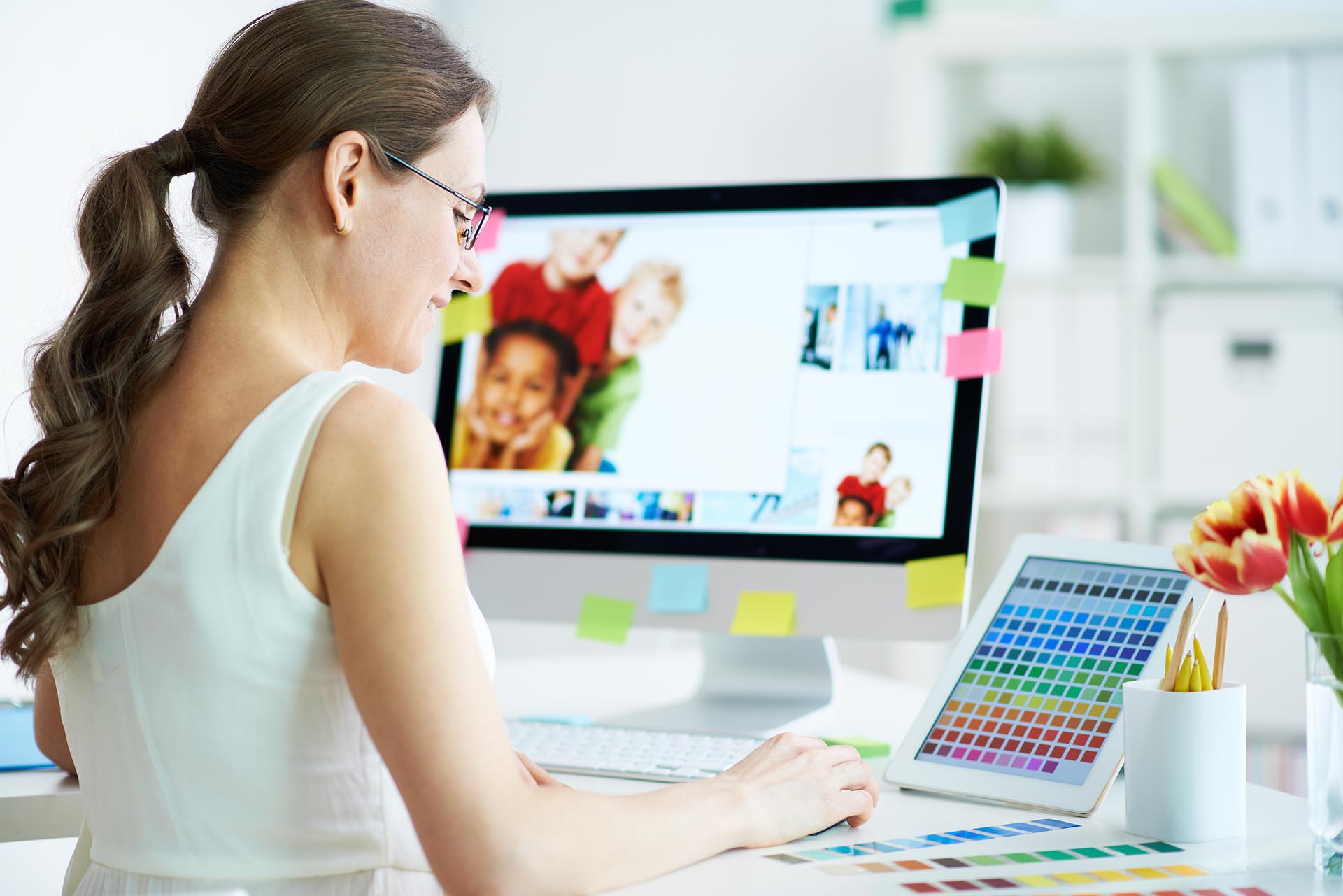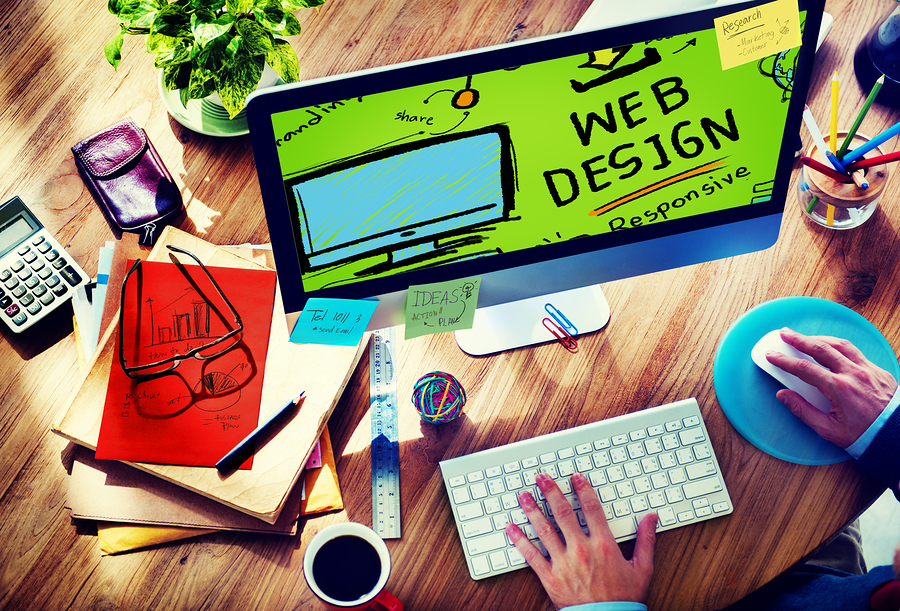Website design trends that increase user engagement
Exploring the Different Kinds Of Web Layout and Their Special Benefits
The landscape of Web style encompasses a selection of designs, each offering unique benefits that deal with various customer requirements. Flat and minimal styles highlight clearness, while receptive and material designs boost flexibility across tools. Illustrative and typography-driven techniques intend to improve interaction and psychological resonance. Understanding these diverse types can substantially affect individual experience and brand understanding. What exists below the surface of these layout options?
Minimal Web Layout

Minimal Web layout often integrates a limited shade scheme and straightforward typography, which not just improves aesthetics however likewise strengthens brand name identity. The reduced complexity can result in quicker filling times, further enhancing customer fulfillment. Additionally, by lessening aesthetic clutter, users can involve with web content better, leading to enhanced understanding and retention. In general, minimal Web layout fosters a smooth customer experience, making it a popular option for brand names aiming to communicate clarity and expertise in their on-line visibility.
Receptive Web Design
Responsive website design has ended up being necessary in today's digital landscape, ensuring mobile compatibility for individuals across various devices. This strategy considerably enhances user experience by supplying smooth navigation and ease of access, no matter of display size. As even more people access the Web on smart devices and tablet computers, the importance of receptive design continues to grow.

Mobile Compatibility Significance
As smart phone usage continues to rise, ensuring internet sites work with various display sizes has actually ended up being necessary for efficient communication and interaction. Mobile compatibility, frequently attained through responsive Web design, enables sites to adapt seamlessly to smart devices, tablet computers, and various other tools. This flexibility not just gets to a wider audience however likewise boosts brand trustworthiness. A website that functions well on mobile phones mirrors professionalism and attention to user demands. In addition, internet search engine prioritize mobile-friendly websites in their rankings, making compatibility an important element for on the internet presence. By spending in mobile compatibility, services can enhance their electronic presence and accommodate the growing number of users that access details on the go. Focusing on mobile-responsive style is critical in today's digital landscape.
Improved Customer Experience

Apartment Design
Flat layout is a minimal approach to Web style that stresses simpleness and quality. By removing three-dimensional aspects such as textures, darkness, and slopes, level style develops an aesthetically appealing customer interface that focuses on material and performance. This design advertises an intuitive navigation experience, as individuals can swiftly determine key functions and actions without interruption.
One of the key benefits of flat design is its responsiveness across different devices and screen dimensions. Its uncomplicated layouts and clean lines adapt seamlessly, making certain a regular experience for users on mobile, tablet, or desktop computer platforms. In addition, flat design commonly includes bold colors and typography, improving aesthetic effect and brand name recognition.
The simpleness integral in level layout leads to faster filling times, which contributes favorably to individual contentment. In general, flat layout remains a preferred choice for contemporary Web growth, straightening with contemporary aesthetic preferences while delivering excellent usability
Product Style
Material Style represents a layout language established by Google that focuses on creating a intuitive and natural user experience across digital systems. This technique emphasizes using grid-based designs, responsive computer animations, and deepness results such as illumination and shadows, which assist to develop a sense of hierarchy and spatial relationships. By imitating the physical world, Product Style allows individuals to connect with digital interfaces in an extra all-natural and engaging way.
Among the vital advantages of Material Layout is its flexibility throughout various gadgets and screen sizes, making certain a consistent experience for customers. Furthermore, it promotes a clear aesthetic language that boosts functionality, making it much easier for customers to navigate complicated applications. The consolidation of lively colors and strong typography likewise plays a vital function in attracting focus to crucial elements, thereby boosting total customer interaction - website design. Product Style has actually become a prominent selection among designers seeking to develop visually enticing and functional web sites.
Typography-Driven Layout
Typography-Driven Layout concentrates on the strategic use of type to improve the functional and visual elements of a site. This style approach focuses on fonts, font sizes, spacing, and hierarchy to create aesthetic rate of interest and guide customer experience. By meticulously picking typography, designers can communicate brand name identification and evoke feelings, making the material extra obtainable and interesting.
Reliable typography boosts readability and use, making sure that users can conveniently take in and navigate the site details. The appropriate combination of type can additionally establish a clear aesthetic power structure, permitting individuals these details to promptly determine essential messages and phones call to action.
In addition, a typography-driven approach can be adjusted to different devices, making sure uniformity across platforms. This flexibility is important in today's multi-device landscape, where customer experience is paramount. Inevitably, Typography-Driven Design serves not just as a creative option yet also as a useful component that considerably influences an internet site's efficiency.
Illustrative Web Style
Illustratory Web design utilizes aesthetic storytelling methods that can greatly boost individual engagement. By integrating one-of-a-kind images, internet sites can develop an unforgettable brand name identity that resonates with their audience. This method not just mesmerizes site visitors but additionally connects messages in an aesthetically compelling way.
Visual Narration Techniques
A plethora of Web developers employ aesthetic storytelling methods to create immersive and engaging individual experiences. This approach integrates layout, typography, and images to tell a tale that reverberates with users on an emotional degree. By integrating compelling visuals, designers can efficiently convey messages and evoke feelings, leading site visitors via a brand name's trip. Infographics, animations, and interactive elements serve to improve stories, making complex information extra available and memorable. In addition, aesthetic storytelling can develop a cohesive brand name identity, as consistent images and styles enhance core worths and messages. Ultimately, this technique not just captivates users but likewise fosters a deeper connection with the content, urging expedition and retention. Via proficient application, aesthetic storytelling transforms basic Web experiences right into vibrant and purposeful communications.
Enhancing User Engagement
Reliable website design significantly improves customer engagement by leveraging illustratory elements that draw attention and foster interaction. Images can simplify intricate principles, making them much more memorable and approachable for customers. They damage the click over here now dullness of text-heavy web pages, developing aesthetic breaks that welcome exploration. Furthermore, special illustrations can evoke feelings, encouraging users to get in touch with the content on a deeper level. Interactive components, such as computer animations or float results, can likewise boost engagement by welcoming users to get involved proactively as opposed to passively eating info. This strategy not only keeps site visitors on the site longer but likewise boosts the probability of return sees. Inevitably, efficient illustratory website design changes the customer experience, making it extra impactful and pleasurable.
Branding With Illustration
Aesthetic elements play a significant role in forming a brand name's identification, and pictures are an effective device hereof. Illustrative Web design enables brand names to convey their special individuality and values with custom-made art work. This strategy fosters a much deeper emotional link with the audience, enhancing memorability and engagement. By incorporating images, brand names can distinguish themselves in a congested industry, producing an unique aesthetic story that reverberates with their target demographic. Additionally, illustrations can simplify complicated principles and make content much more accessible, efficiently interacting messages in an appealing manner. Generally, branding via picture not just enhances the customer experience but likewise enhances brand acknowledgment, making it review an important method for businesses aiming to establish a solid on the internet existence.
Frequently Asked Questions
Exactly how Do I Pick the Right Web Design Kind for My Business?
To choose the right website design kind for a service, one must examine objectives, target market, and sector criteria. Assessing individual experience and capability will guide the selection procedure for ideal involvement and efficiency.
What Equipment Are Ideal for Producing Different Web Style Designs?
Popular devices for developing varied Web layout styles include Adobe XD, Figma, Sketch, and WordPress. Each deals distinct functions customized to various layout demands, allowing designers to develop aesthetically appealing and functional websites effectively.
Just How Much Does Specialist Website Design Normally Price?
Expert website design commonly sets you back between $2,000 and $10,000, relying on complexity, functions, and developer know-how. Personalized remedies and continuous maintenance might enhance expenses, while layouts can offer more budget-friendly options for less complex tasks.
Can I Integrate Several Website Design Enters Properly?
Yes, integrating numerous Web style kinds can be efficient. By incorporating components from different designs, designers can create special, engaging customer experiences that deal with diverse audiences while enhancing performance and visual appeal.
Exactly How Do Layout Trends Impact Individual Experience and Involvement?
Style patterns significantly affect user experience and engagement by boosting aesthetic appeal, enhancing navigation, and promoting psychological links - website design. Staying updated with fads allows designers to produce user-friendly user interfaces that reverberate with users and encourage long term communications
Level and minimal styles emphasize clarity, while receptive and worldly designs enhance flexibility across tools. It may seem counterintuitive, minimal Web style highlights simplicity to boost user experience. Responsive Web design plays a crucial role in enhancing customer experience by making sure that a website adapts flawlessly to different display dimensions and tools. Level design is a minimalist technique to Web design that emphasizes simplicity and quality. Material Design stands for a layout language developed by Google that concentrates on producing a cohesive and intuitive user experience across digital systems.